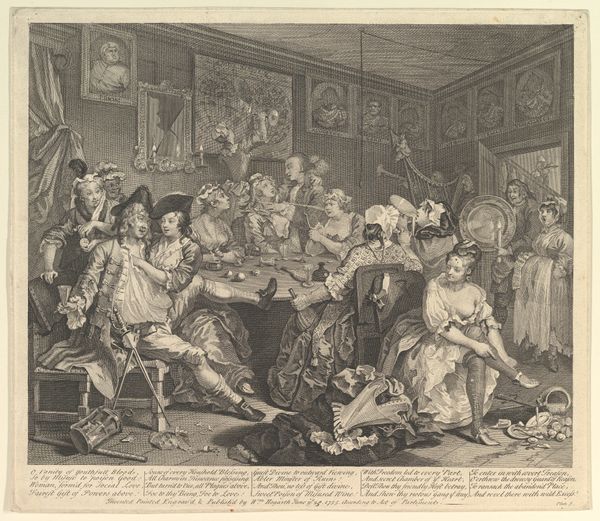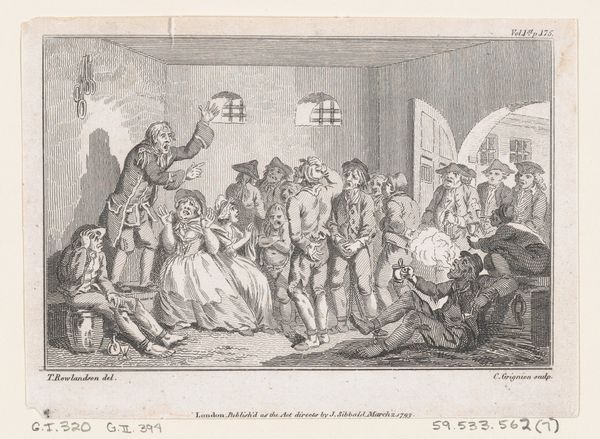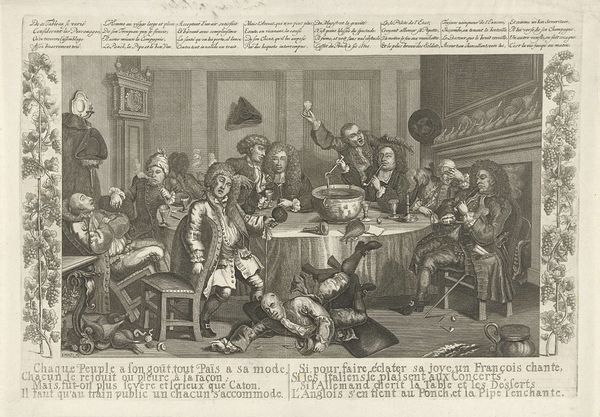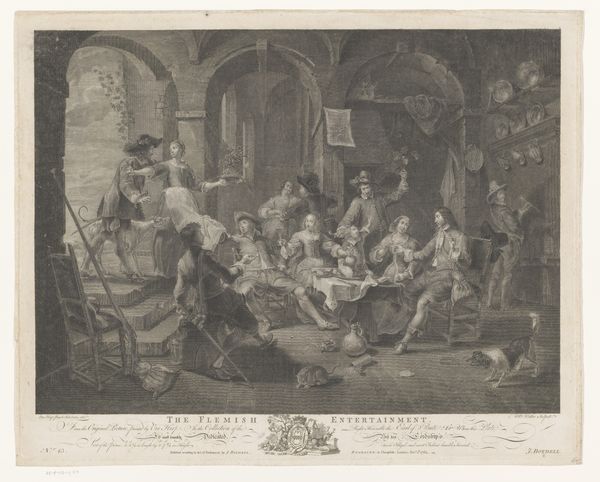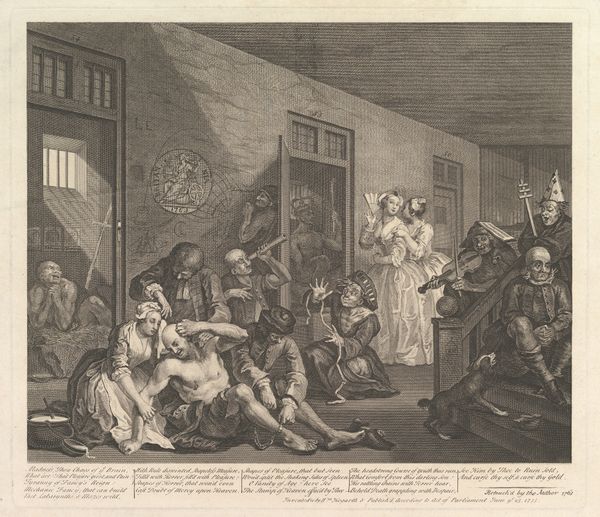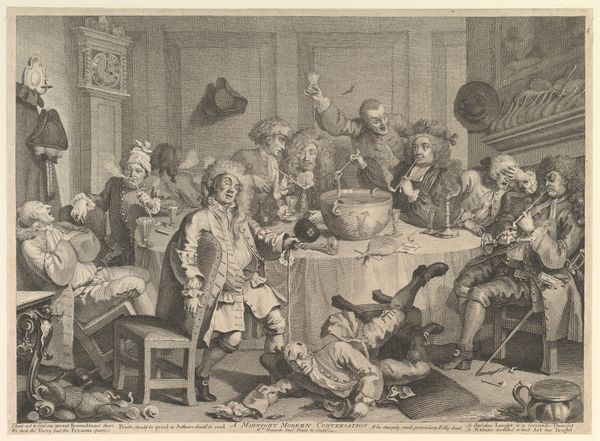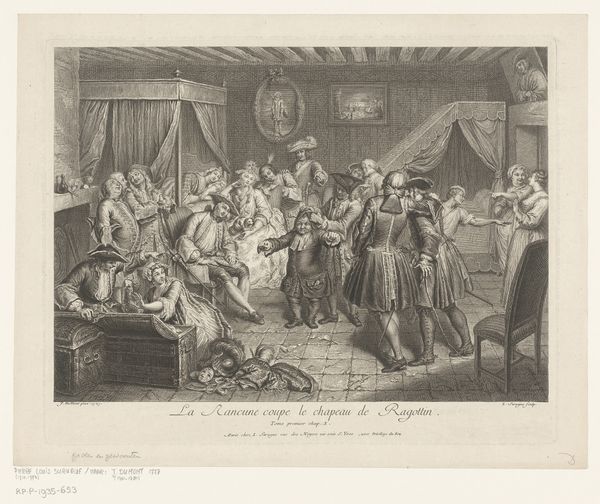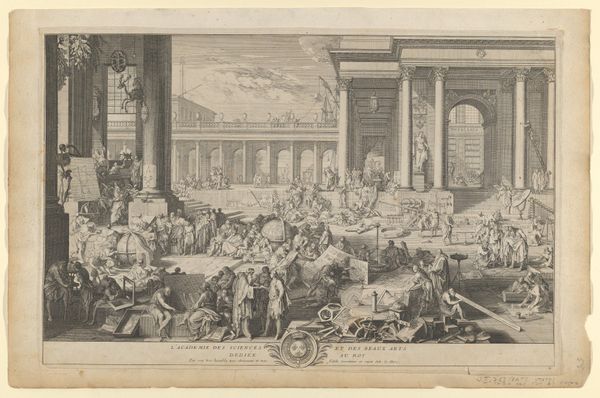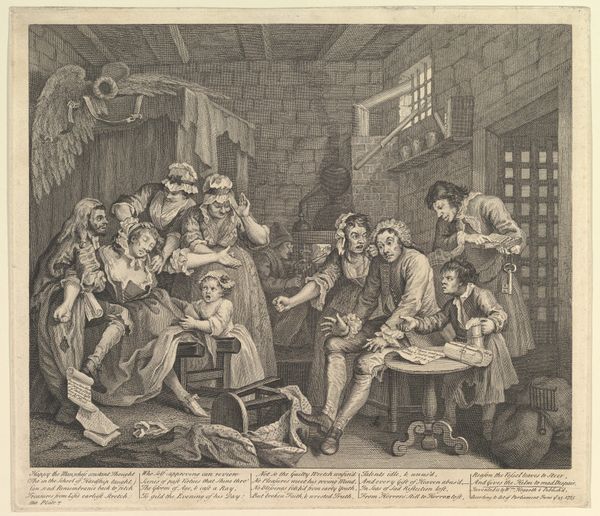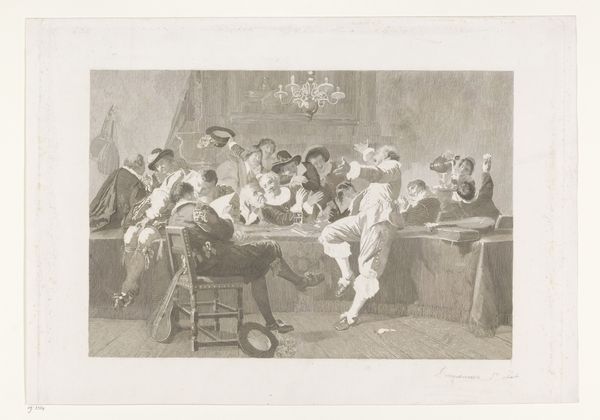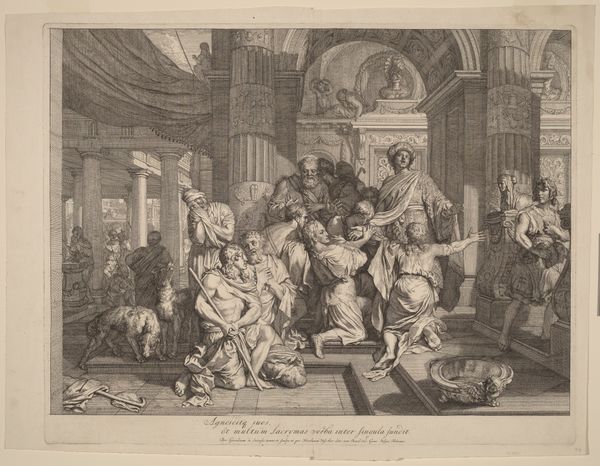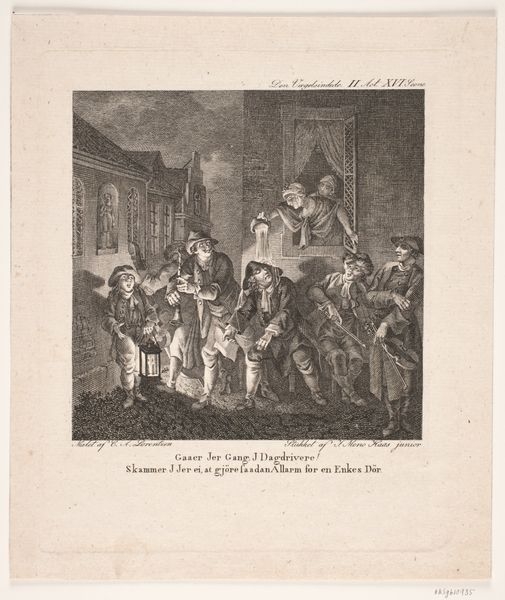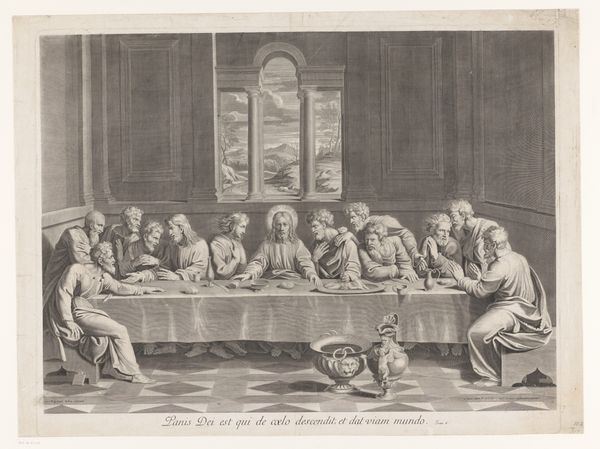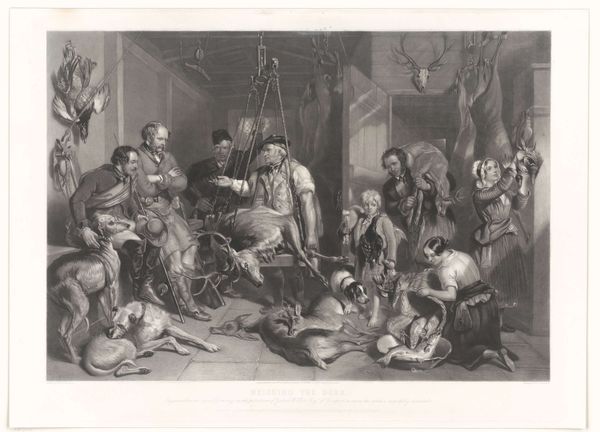
drawing, print, engraving
#
portrait
#
drawing
#
flâneur
#
narrative-art
#
baroque
# print
#
caricature
#
old engraving style
#
ukiyo-e
#
social-realism
#
genre-painting
#
history-painting
#
engraving
Dimensions: plate: 14 x 16 1/4 in. (35.6 x 41.2 cm) sheet: 15 9/16 x 14 15/16 in. (39.6 x 37.9 cm)
Copyright: Public Domain
Curator: William Hogarth's "A Rake's Progress, Plate 6," made in 1735, presents a dizzying scene through the medium of engraving. What's your immediate impression? Editor: Chaotic. Overwhelming. There's a palpable sense of unraveling, of social norms completely dissolving. Everyone appears caught up in their own mania. Curator: Indeed. Hogarth's expert use of the engraving process allowed him to capture intricate details and a wide tonal range, notice the cross-hatching and line work that create such strong definition. How does the print's materiality affect its reception? Editor: Engraving allowed for the democratization of images. Hogarth leveraged printmaking's accessibility to critique social inequalities—consider the story being told in relation to issues of wealth, class, and the exploitation of vulnerable individuals within London's burgeoning market economy. What about the narratives of mental health presented? Curator: Interesting point! Consider the materiality here, and the conditions of its creation. Hogarth meticulously planned each print, controlling the production to reach the broadest possible audience. His engravings, although commercially driven, functioned as a potent form of social commentary, reflecting on the material circumstances of life in Georgian England. Editor: Precisely. He turns the lived experience of madness into a commodity, even if his intentions might have included a cautionary tale. We have to address the power dynamics: the artist, the audience, the subjects themselves. Who has the authority to depict, and who is being depicted? The lack of agency of these patients is troubling. Curator: Fair. The very act of etching and printing these scenes involves labor. Skilled engravers transferred Hogarth's vision onto the copper plates. The production line itself highlights the transformation of creativity into a commodity. Consider the cost and labor involved compared to painted artwork of that time. Editor: And think about the colonial context, too. The wealth enabling such debauchery derived, in part, from exploitative trade networks and imperial expansion. Can we truly divorce these interior scenes from the global forces at play? I'm interested in the stories that exist outside this space, brought in by the people depicted in it. Curator: It certainly provokes discussion. Hogarth’s focus on production extends beyond the image itself. It compels us to examine who benefits from such chaotic depictions and what economic system allows these scenarios to occur and be made into art. Editor: For me, the piece embodies an era wrestling with new systems, grappling with class tensions, gender expectations, the reality of its politics, its economics, and human failings, even on a global scale. The materiality reminds us of the wider, systemic structures influencing daily life and artmaking alike.
Comments
No comments
Be the first to comment and join the conversation on the ultimate creative platform.
